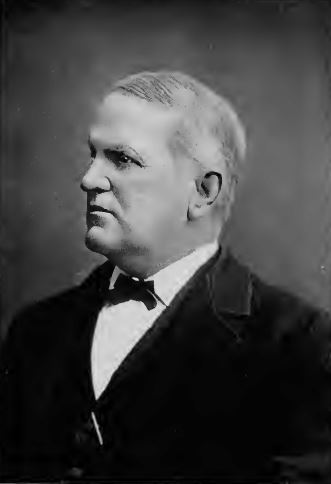The Great Shohola Train Wreck – Preparations and Receipt of Prisoners at Elmira
Posted By Norman Gasbarro on May 2, 2014
In 1912, Clay W. Holmes wrote and published The Elmira Prison Camp: A History of the Military Prison at Elmira, N.Y., July 6, 1864 to July 10, 1865. The book is available free from the Internet Archive (click on title and follow instructions at left of page to download).
After the Great Shohola Train Wreck occurred on 15 July 1864, plans had to be made at Elmira to receive the Confederate prisoners who had survived. In commemoration of the 150th anniversary of the accident, this blog post series continues. To see all the posts in this series, click on ShoholaTrainWreck.
The story, as it appeared in The Elmira Prison Camp, appears below:
The morning of Saturday, 16 July 1864, brought to Elmira the startling news that there had been a frightful railroad accident at Shohola, a coal train having collided with the train bearing a detachment of prisoners of war. The city was thrown into a whirl of excitement, and the officers at the prison camp were busily occupied in making such arrangements as were possible with the limited facilities at hand to care for the wounded prisoners on arrival….
A new train was made up as soon as possible and proceeded on its way. It consisted of twenty cars, the first six containing wounded prisoners. The train reached Elmira at 9:30 P.M. Colonel Eastman and Surgeon Wey were on the spot to direct the work of unloading the wounded. All the U.S. baggage wagons at the post, twelve in number, were on hand lined up to receive the wounded, the bottoms all covered with hay, to make the journey as easy as possible. The sick and the ailing who were unable to walk were also put into the wagons. Those who could walk were marched to the camp, and on arrival were provided with a good comfortable meal to offset the enforced fast occasioned by the delay.
One of the barracks had been hastily emptied to provide the best possible quarters for the wounded. The wounded guards were sent to the general hospital to be cared for by the nurses as best they could. Surgeon Wey turned his attention immediately to the prisoners, and, with all the assistance he could procure, toiled patiently and steadily through that long Saturday night till daylight in his efforts to dress the wounds, but it was impossible to give attention to so many in so short a time.
The scarcity of lint and bandages crippled them in their work. This supply had been ample for any ordinary requirement, but the extraordinary demand exhausted the supply to had in all the Government hospitals, and little could be done till more was obtained. Surgeon Wey did not wait for official orders and requisitions, but in some way got word to all the city pastors, so that there went forth on Sunday morning, from every pulpit, a stirring appeal to the ladies for lint, bandages, and delicacies, with the request that any contribution be sent at once to his own residence, so that he might personally see that they reached the prison camp in the shortest possible time…. The response was immediate and contributions were sent in, not only by the ladies of Elmira, but from many adjoining towns…
The Ladies Hospital Aid Association also responded quickly with liberal supplies of delicacies in addition to the dressings needed. This Association had been organized in the early days of the war, to provide needed supplies to be sent to the front. They responded with the same alacrity and cheerful spirit to the call for aid to the suffering Confederates which before had characterized their labors for our own wounded at the front….
The herculean task was not completed till Monday noon. Some might say that in such an emergency other city physicians should have been called in to assist. The situation was just this. All the leading surgeons of Elmira, except Dr. Wey, were in active service at the front, and the sick citizens of Elmira were left to the mercy of what little attention Surgeon Wey might be able to render during his supposed hours of rest, assisted by medical students or nurses. This statement is made to answer the criticism of Mr. Keiley, in his book, charging a criminal neglect because some of the wounded prisoners were still unattended on Monday morning. The evidence would indicate that everything possible was done to meet this startling emergency, with no thought or treatment different from that which would have been accorded our own soldiers. As a matter of fact, the wounded guards were actually neglected and delegated to the care of inexperienced nurses, that the Confederates might receive the best attention possible under the circumstances.
Captain M. H. Church, 11th Veteran Reserve Corps, was sent to Shohola on 22 July 1864 to direct the conveyance of such wounded as could be moved to Elmira. He returned with seven, brought on movable beds.
——————————
The portrait of Dr. Wey is from The Elmira Prison Camp.
 ;
;




Comments